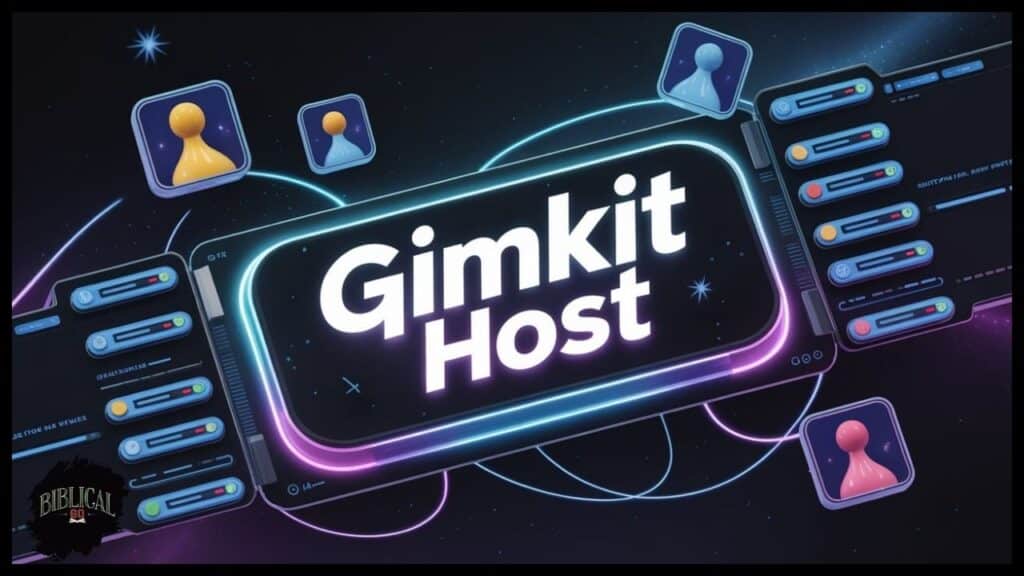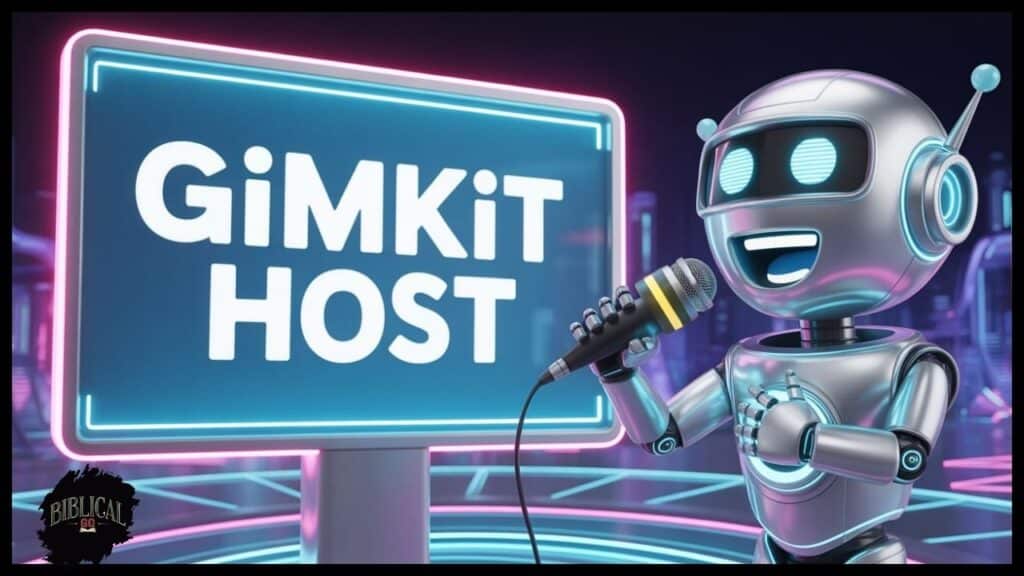Being a successful Gimkit host isn’t just about clicking “start game” and hoping for the best. You’re orchestrating an interactive learning platform experience that can make or break student engagement.
The difference between amateur and expert hosts? Strategic planning, understanding student engagement psychology, and mastering the art of gamification in education.
Think about it this way: a great Gimkit host transforms boring review sessions into electrifying competitions where students actually fight for correct answers. That’s the power of skilled hosting.
Key Statistics:
- Students show 89% higher retention rates with game-based learning versus traditional methods
- Interactive learning platforms increase participation by 67% in remote settings
- Expert Gimkit hosts report 45% improvement in student performance metrics
Understanding Gimkit’s Strategic Advantage Over Competitors
What Makes This Interactive Learning Platform Different?
Gimkit doesn’t just ask questions it creates an economy. While Kahoot gives simple points, Gimkit builds virtual wealth systems that tap into deeper psychological motivators.
Core Differentiators:
FeatureGimkitCompetitorsGame EconomyVirtual currency systemSimple point scoringPower-upsStrategic gameplay elementsBasic rewardsCustom RulesInfinite customizationLimited optionsAsynchronous LearningSelf-paced assignmentsLive-only formatsAnalytics DepthDetailed performance trackingBasic statistics
The Psychology Behind Gimkit’s Success
Game-based learning works because it triggers three powerful motivators:
- Autonomy – Students control their virtual spending
- Mastery – Progressive difficulty builds confidence
- Purpose – Learning objectives feel like game objectives
Setting Up Your Gimkit Host Account for Maximum Impact
Dashboard Navigation Secrets Most Hosts Miss
Your Gimkit dashboard is mission control. Here’s what successful hosts prioritize:
Essential Setup Steps:
- Profile customization with clear hosting credentials
- Google Classroom integration for seamless workflow
- Kit organization system using strategic naming conventions
- Analytics and reporting preferences for data-driven decisions
Subscription Plans Decision Framework
Free Version Limitations:
- 5 kits maximum
- Basic game modes only
- Limited performance analytics
- No breakout rooms integration
Pro Plan Benefits ($4.99/month):
- Unlimited kit creation
- Advanced game modes like Trust No One
- Detailed student performance reports
- Multimedia integration capabilities
- Priority technology troubleshooting support
Pro Tip: Start with free version to master hosting basics, then upgrade when you need advanced customization features.
Game Modes: Strategic Selection for Different Learning Scenarios
Classic Mode – When Simplicity Wins
Classic Mode works perfectly for:
- New student introductions to Gimkit
- Assessment strategies requiring individual accountability
- Quick review sessions before tests
- Remote learning environments with connectivity issues
Hosting Strategy: Keep energy high with rapid-fire questions and celebrate individual achievements loudly.
Team Mode – Collaborative Learning Excellence
Team Mode transforms classrooms into strategic war rooms. Students collaborate, debate answers, and build critical thinking skills naturally.
Optimal Team Composition:
- 3-4 students per team maximum
- Mix high and low performers intentionally
- Rotate team leadership roles
- Establish clear collaborative learning protocols
Trust No One – Building Suspense Without Chaos
This game mode adds deception elements that create unforgettable experiences. One student becomes the “imposter” trying to sabotage others.
Management Techniques:
- Set clear behavioral expectations before starting
- Monitor chat for misconduct management
- Have backup activities if tensions rise
- Debrief the experience afterward for learning objectives
Infinity Mode – Asynchronous Learning Powerhouse
Infinity Mode lets students play at their own pace, perfect for homework assignments or differentiated instruction.
Assignment Integration:
- Set specific time limits based on content complexity
- Create themed games matching current curriculum units
- Use performance tracking to identify struggling students
- Implement feedback loop systems for continuous improvement
Kit Creation: Building Content That Hooks Students
Question Writing Psychology That Works
Great questions do more than test knowledge they teach while engaging. Here’s the formula:
The 3-Second Rule: If students can’t understand your question in 3 seconds, they’ll disengage immediately.
Effective Question Structure:
Clear stem + Specific context + Logical distractors = EngagementCommon Question Mistakes That Kill Momentum:
- Trick questions that feel unfair
- Overly complex sentence structure
- Cultural references students don’t understand
- Answer choices that don’t teach anything
Multimedia Integration That Enhances Learning
Visual elements aren’t decorations they’re cognitive tools. Use images strategically:
Image Best Practices:
- High contrast for visibility on all devices
- Relevant context that supports learning objectives
- Consistent style throughout your kit
- Accessibility considerations for diverse learners
Video Integration Tips:
- Keep clips under 30 seconds for attention span management
- Add closed captions for inclusive environments
- Test playback on different devices before hosting
- Have static backup images if video fails
Difficulty Progression Curves for Flow State
Flow state occurs when challenge perfectly matches ability. Structure your kits with intentional difficulty curves:
Progression Strategy:
- Easy opener (80% success rate target)
- Moderate build (60% success rate)
- Challenge peak (40% success rate)
- Recovery questions (70% success rate)
- Strong finish (75% success rate)

Live Gimkit Host Mastery Techniques
Pre-Game Rituals That Set You Apart
Professional hosts never wing it. They follow systematic preparation protocols:
Essential Pre-Game Checklist:
- Test game code generation and sharing
- Verify all multimedia integration works properly
- Prepare backup plan for technical failures
- Set room environment for optimal engagement
- Review student participation expectations
- Have power-ups strategy planned
- Prepare celebration phrases for achievements
Real-Time Energy Management During Gameplay
Reading the room is crucial for successful Gimkit host performance. Watch for these engagement warning signs:
Disengagement Indicators:
- Delayed response times increasing
- Side conversations growing louder
- Students checking phones frequently
- Answer accuracy dropping below 30%
- Chat participation declining rapidly
Energy Recovery Techniques:
- Power-up surprise activations
- Team celebration breaks
- Quick stretch or movement activities
- Strategic leaderboard reveals
- Inject humor with appropriate commentary
- Switch game modes mid-session if needed
Student Misconduct Management Without Killing Fun
Misconduct management requires finesse. You want fair play without becoming the “fun police.”
Diplomatic Strategies:
- Private messaging for minor issues
- Team leader responsibility systems
- Positive behavior incentives rather than punishments
- Clear consequence escalation paths
- Community involvement in setting game rules
Advanced Gimkit Host Techniques for Expert Results
Data-Driven Hosting Decisions
Analytics and reporting transform good hosts into great ones. Here’s what expert hosts track:
Key Performance Metrics:
MetricOptimal RangeAction TriggerAverage Response Time8-15 seconds>20s = too difficultParticipation Rate>85%<70% = re-engageAccuracy Rate60-75%<50% = review neededChat Engagement5-10 messages/minute0 = add interaction
LMS Integration Strategies That Actually Work
Google Classroom integration isn’t just about convenience it’s about creating seamless learning management systems workflows.
Integration Best Practices:
- Sync assignment due dates with Gimkit sessions
- Use performance analytics for gradebook entries
- Create differentiated instruction paths based on game data analysis
- Set up automated parent communication for progress updates
Long-term Learning Objective Tracking
Transform individual games into comprehensive curriculum alignment systems:
Strategic Implementation:
- Map question sets to specific learning standards
- Track individual student progress across multiple sessions
- Identify knowledge gaps through pattern analysis
- Adjust teaching strategies based on performance data
Special Event Hosting That Students Remember
School-wide Competition Management
Large-scale events require different hosting strategies. Here’s how expert hosts manage championship games:
Tournament Structure Planning:
- Single elimination for time efficiency
- Double elimination for fairness
- Round-robin for maximum participation
- Hybrid formats for complex needs
Prize Structure Psychology:
- Intrinsic rewards (certificates, recognition) over monetary prizes
- Team achievements alongside individual winners
- Participation incentives for non-winners
- Community recognition opportunities
Themed Games Without Cheesy Execution
Holiday integration can enhance learning when done thoughtfully:
Successful Theme Examples:
- Halloween vocabulary using spooky imagery
- Christmas math problems with winter contexts
- Pirate Day history questions with adventure framing
- Science Fair demonstrations through game mechanics
Theme Integration Rules:
- Content comes first, theme supports it
- Avoid stereotypes or exclusionary references
- Keep decorative elements subtle and professional
- Maintain educational objectives focus
Remote Learning and Virtual Gimkit Host Excellence
Virtual Engagement Techniques for Online Success
Remote learning hosting requires adapted strategies for digital environments:
Camera Management:
- Encourage but don’t mandate video participation
- Use breakout rooms for team collaboration
- Position yourself prominently in video frame
- Maintain high energy despite screen barriers
Attention Span Management:
- Shorter game sessions (15-20 minutes maximum)
- More frequent power-up activations
- Interactive chat engagement strategies
- Clear audio cues for transitions
Technology Troubleshooting Like a Pro
Backup plans separate amateur from professional hosts:
Common Issues and Solutions:
ProblemImmediate FixPrevention StrategyGame code not workingGenerate new code instantlyTest codes 10 minutes earlyStudent can't joinIndividual troubleshooting via chatPre-session tech checkConnectivity dropsSwitch to mobile hotspotHave secondary internet readyAudio issuesUse chat for instructionsTest audio equipment daily
Feedback Collection and Continuous Improvement
Student Feedback Methods Beyond Surveys
Traditional feedback forms don’t capture the full Gimkit experience. Try these innovative approaches:
Creative Feedback Techniques:
- Exit ticket games using Gimkit itself
- Voice memo submissions for detailed responses
- Collaborative feedback walls in breakout rooms
- Anonymous suggestion boxes for sensitive topics
- Performance data pattern discussions with students
Self-Assessment Tools for Hosting Skills
Professional development requires honest self-evaluation:
Host Performance Checklist:
- Did I maintain high energy throughout?
- Were learning objectives clearly achieved?
- Did all students participate meaningfully?
- Was technology managed smoothly?
- Would students request this experience again?
Building Your Reputation in the Educational Technology Community
Professional Development Resources That Matter
Successful Gimkit hosts never stop learning:
Essential Learning Sources:
- EdTech conferences with gamification tracks
- Online communities of game-based learning practitioners
- Peer observation programs with other hosts
- Beta testing opportunities for new Gimkit features
- Research studies on educational games effectiveness
Expanding Influence Beyond Your Classroom
Expert hosts become educational technology leaders by:
Leadership Opportunities:
- Training other teachers in hosting strategies
- Presenting at educational conferences
- Writing about gamification best practices
- Mentoring new Gimkit hosts
- Contributing to curriculum development teams
Quick Reference Resources for Gimkit Hosts
Pre-Game Checklist Template
Technical Setup:
- Internet connectivity tested and stable
- Game code generated and ready to share
- Multimedia elements tested on target devices
- Backup activities prepared for technical failures
- Timer or clock visible for session planning
Content Preparation:
- Learning objectives clearly defined
- Question difficulty appropriately balanced
- Team compositions planned (if using Team Mode)
- Power-up strategy decided
- Assessment integration planned
Environment Setup:
- Room arranged for optimal screen visibility
- Audio equipment tested and positioned
- Distractions minimized or eliminated
- Emergency contact information accessible
- Parent communication methods ready
Frequently Asked Questions from Expert Gimkit Hosts
How do you handle students who game the system?
Gaming the system often indicates engagement, not cheating. Channel this energy positively:
- Set clear fair play expectations upfront
- Use Trust No One mode to legitimize strategic deception
- Create team accountability systems
- Focus on learning rather than winning
- Celebrate creative thinking within rules
What’s the optimal game length for different age groups?
Age-appropriate session lengths:
Age GroupOptimal DurationMaximum DurationElementary (K-5)10-15 minutes20 minutesMiddle School (6-8)15-20 minutes30 minutesHigh School (9-12)20-25 minutes45 minutesAdult Learners25-30 minutes60 minutes
How do you maintain educational rigor while keeping it fun?
Balance strategies:
- Learning objectives drive all game design decisions
- Fun elements support rather than replace educational content
- Assessment happens naturally through gameplay
- Serious topics can still use engaging delivery methods
- Student reflection connects fun experiences to learning outcomes
Conclusion: Your Journey from Host to Gae-Based Learning Leader
Becoming a successful Gimkit host transforms more than just your teaching strategies it revolutionizes how students experience learning. You’re not just facilitating games; you’re architecting experiences that make education irresistibly engaging.
Master hosts understand that Gimkit success comes from strategic planning, psychological insight, and relentless focus on student engagement. They create kits that teach while entertaining, manage live games that energize while educating, and use data analysis to continuously improve their craft.
Your hosting journey evolves through three distinct phases:
Phase 1: Technical Mastery – Learn game modes, kit creation, and basic hosting strategies
Phase 2: Engagement Expertise – Develop energy management, student psychology, and advanced techniques
Phase 3: Educational Leadership – Influence curriculum, mentor other hosts, and shape institutional culture
The interactive learning platform landscape continues evolving, but fundamental hosting principles remain constant: know your students, master your content, and never stop improving. Great Gimkit hosts don’t just host games they create learning experiences that students carry with them long after the final question.
Start implementing these strategies today. Your students deserve nothing less than educational gaming excellence, and you have everything needed to deliver it. The classroom revolution begins with hosts like you who refuse to settle for boring when extraordinary is possible.
Ready to become the Gimkit host your students will remember forever? The game begins now.
Read more knowledgeable blogs on Biblical Go

Piper McMillan is a devoted writer and Bible enthusiast, offering insightful guides on Bible verses. Her blog provides practical interpretations and reflections, helping readers deepen their faith and understanding of Scripture through accessible and inspiring content.



